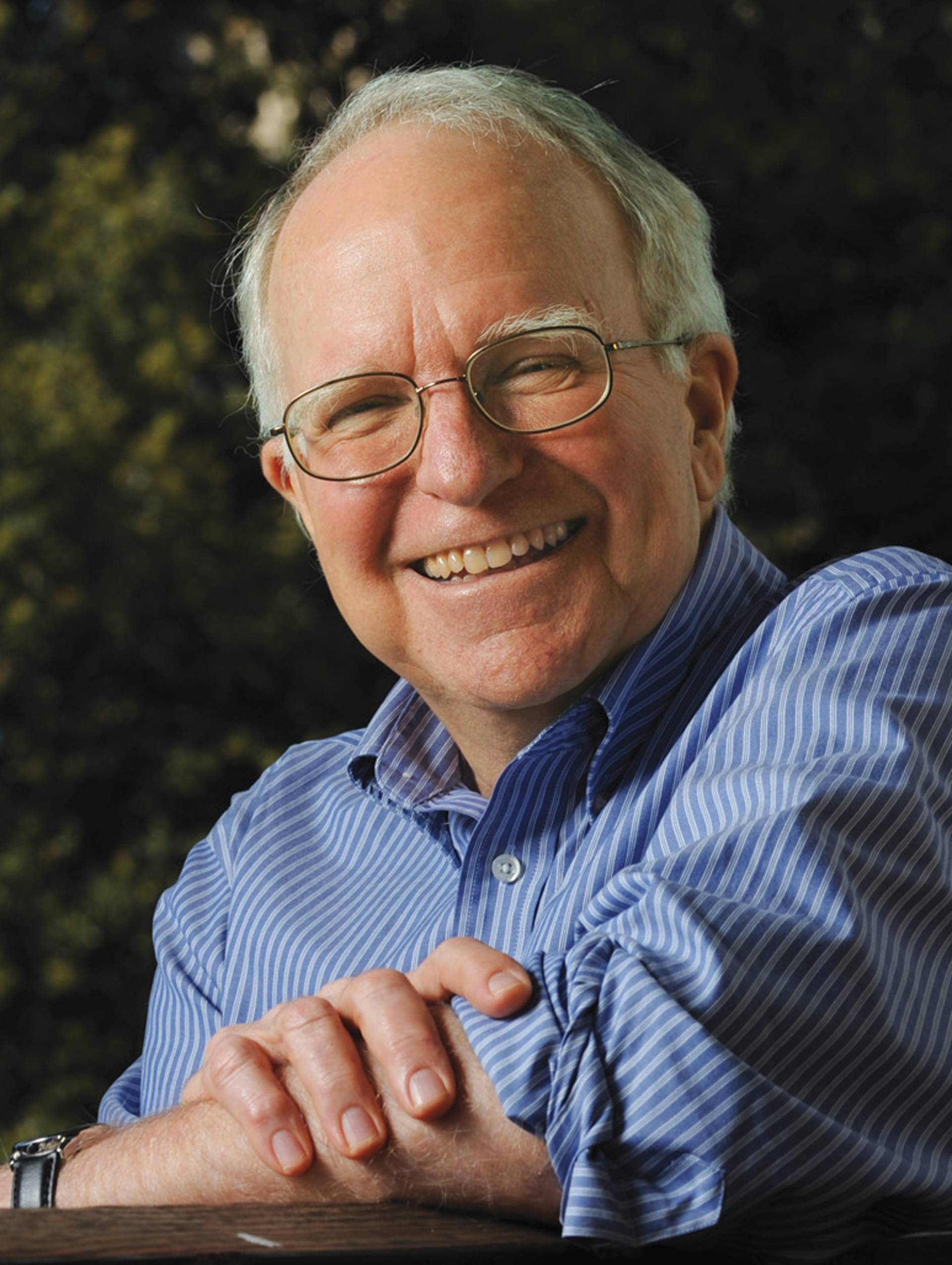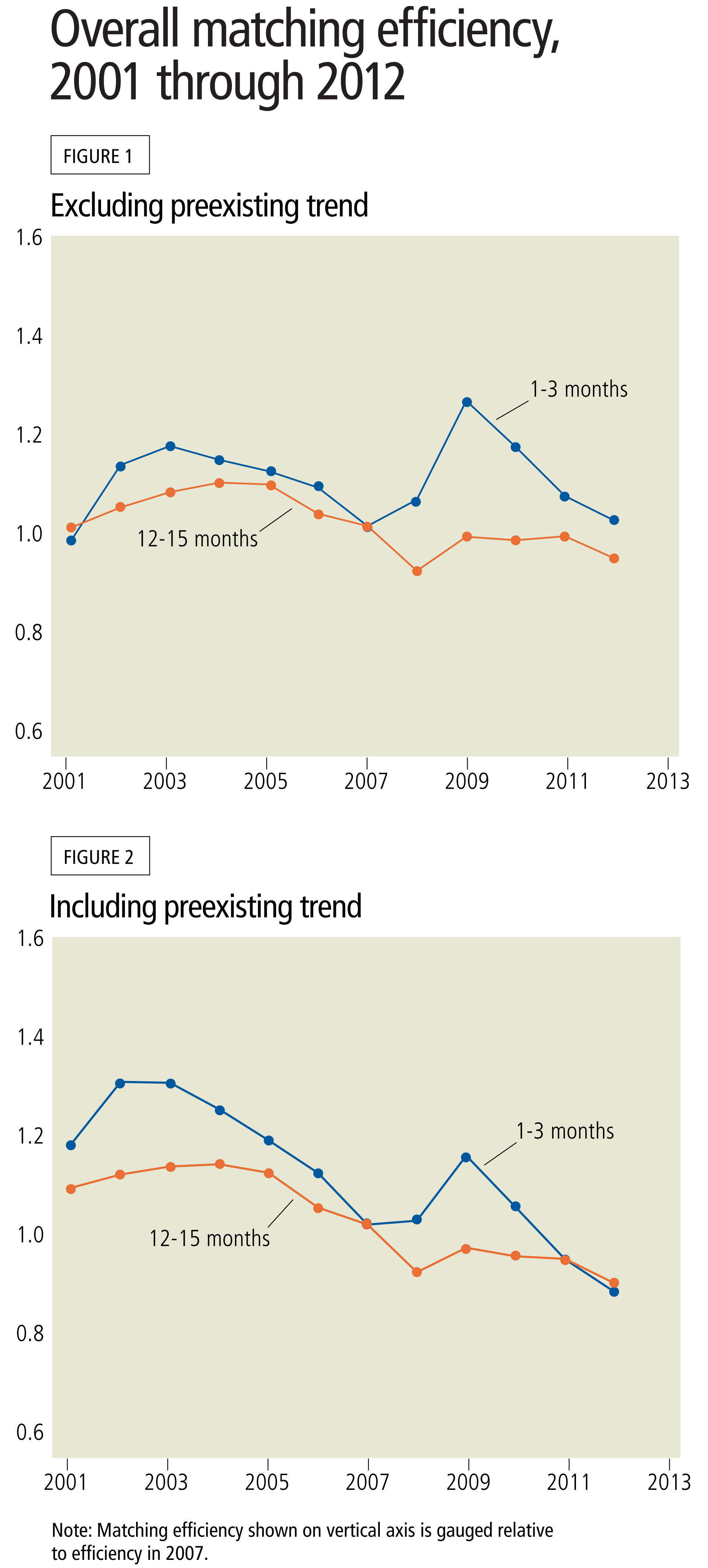During and since the Great Recession, economists and policymakers have been concerned that the U.S. job market was, in a sense, broken. Employers couldn’t find suitable workers, and workers couldn’t find good jobs. “Mismatch between skills and applicants, available and desired pay is a big conundrum in today’s labor market,” suggested a 2012 Wall Street Journal article analyzing U.S. unemployment. A related term, “structural unemployment,” implied that although plenty of people were looking for jobs, they just didn’t have the right skills for the jobs available.
The broader policy question was whether stubbornly high unemployment rates were the result of insufficient demand or poorly functioning labor markets; the former might be amenable to monetary policy intervention, but the latter less so. For his part, then-Fed Chairman Ben Bernanke suggested that persistently high unemployment was the result of a “broad-based shortfall in demand” rather than a “substantial increase in mismatch between available jobs and workers.” Still, many were convinced that labor markets were broken.
A recent paper by Stanford’s Robert Hall and the Minneapolis Fed’s Sam Schulhofer-Wohl (WP 721) casts new light on the issue with a careful analysis of labor market “matching efficiency”—the ability of an economy to find the right worker for the right job. They conclude that standard methods of measuring matching efficiency arrive at an inaccurate finding of lower matching efficiency since the recession. If the volume of job-seeking is better measured and studied over longer employment time spans, they find, it appears that while U.S. matching efficiency has indeed declined since 2001, the recession had little impact on this downward trend, except among the long-term unemployed.
A closer look
The analysis focuses closely on the concept of “job seeker,” observing that people looking for jobs come in many different stripes. Some have been out of the labor force for a very long period. Others were laid off just last week. Still others currently have a job, but are looking for something better. Most research on matching efficiency has assumed that the right measure of job-seeking volume is the stock of unemployed workers, but government statistics show that “only about a quarter of newly filled jobs involve hires of the unemployed. The remaining three-quarters come from out of the labor market or from job-to-job transitions,” write Hall and Schulhofer-Wohl.

Robert Hall
So the economists take a fine-grained look at people searching for jobs, well beyond “the unemployed,” and come up with 15 job-seeker categories. They then estimate job-finding rates or probabilities for each (after adjusting for changes in labor force composition—that is, variations over time in age, education and gender distributions, since those traits influence labor prospects).
The variations in likelihood of finding a job vary widely by job status, the economists find. For a person just laid off, for example, they calculate an average employment probability at 1 to 3 months of 60.5 percent in 2012. Someone who recently entered the labor force, by contrast, had a much lower 1-3 month employment probability, about 15 percent. Those rates changed over time but, again, far more for some statuses than others. In 2001, a recently laid-off person had a 1-3 month probability of 59.7 percent, just slightly lower than in 2012. But a recent entry had a much better chance in 2001: nearly 31 percent probability of finding a job within 1 to 3 months.
In order to assess the effect of labor market conditions not only on whether workers find jobs, but also on how quickly they do so, the economists do these calculations for a longer (12-15 month) time horizon as well as for the short span (1-3 month).
Trends in matching efficiency
They next develop a matching efficiency index by adjusting the job-finding rates for overall labor market tightness. Market tightness—the ratio of job openings to new hires—has an obvious influence on job-finding. If a labor market is relatively tight, employers find it harder to find suitable employees. Workers, on the other hand, have an easier time getting hired. So, for a given level of matching efficiency, job-finding rates will be higher when the labor market is tighter. By subtracting the effect of labor-market tightness from the measured job-finding rates, the economists can calculate their index of matching efficiency.

Sam Schulhofer-Wohl
For all 15 job status categories, they estimate U.S. matching efficiency from 2001 to 2012 at different time spans. With job-finding rates adjusted for shifting labor force composition, their efficiency estimates are shielded from any changes in gender, age and education characteristics that occurred over the decade. In addition to the individual category estimates, the economists develop an overall labor force estimate, aggregating the 15 but weighting by the relative shares of each component in the three years preceding the financial crisis. Finally, because their interest is in whether the Great Recession itself affected efficiency, they calculate rates with and without adjusting for any preexisting trends in efficiency.
The results are seen in the accompanying figures.
The first figure shows “detrended” overall matching efficiency for short-span (1 to 3 months) and long-term (12 to 15 months) employment success rates. Both lines show that efficiency moves cyclically, rising as recessions begin and falling during recoveries. But between the cycles, in 2001, 2007 and 2012, the blue line shows that short-span matching efficiency was essentially unchanged. Long-term rates jumped less with business cycles, but did shift slightly down.
The second figure is also revealing. Both lines move with business cycles (long-term less so), but they also trend downward, especially for short-term success rates. In other words, there does appear to be a slight decline in matching efficiency, but the two recessions didn’t cause it.
In sum, Hall and Schulhofer-Wohl conclude, “matching efficiency has declined in some categories of unemployment,” but “most of the decline is the continuation of a trend that has existed since 2001 and possibly earlier.” Still, an important reality is that efficiency declined significantly for those with permanent job loss, the truly long-term unemployed, a category that grew disproportionately in the Great Recession. “One important implication is that the decline in matching efficiency among the unemployed drove up the unemployment rate, but the labor market still generated large volumes of job-finding among groups not counted as unemployed.”






